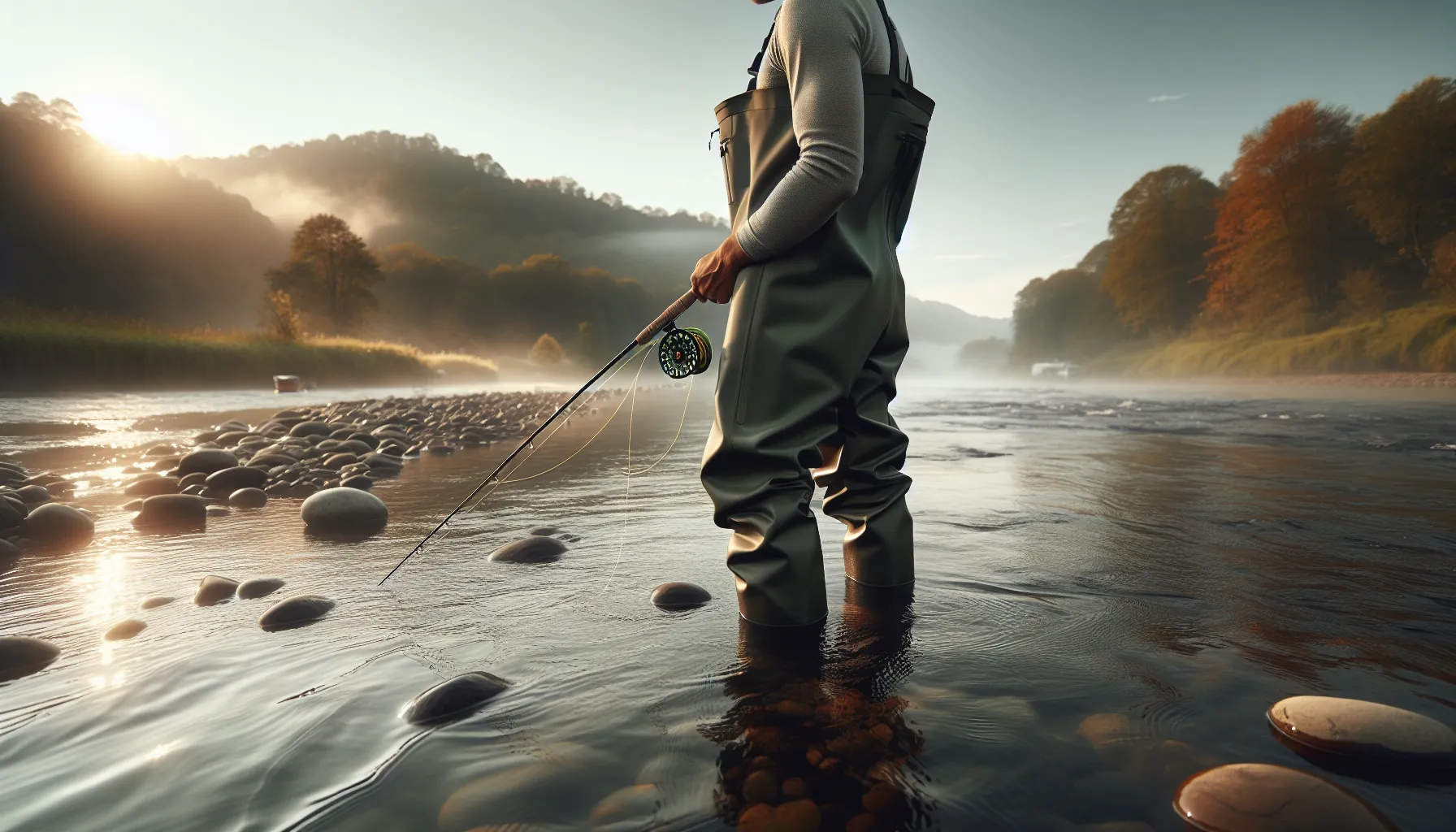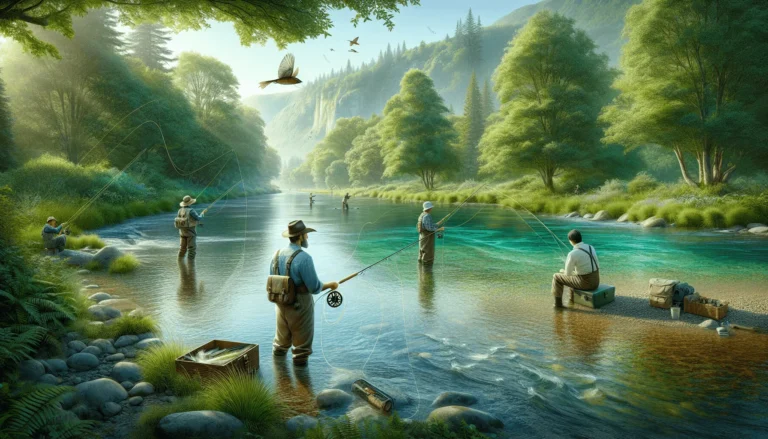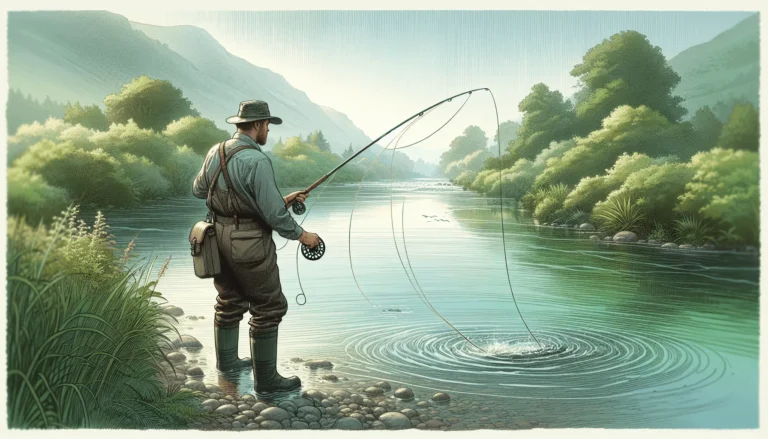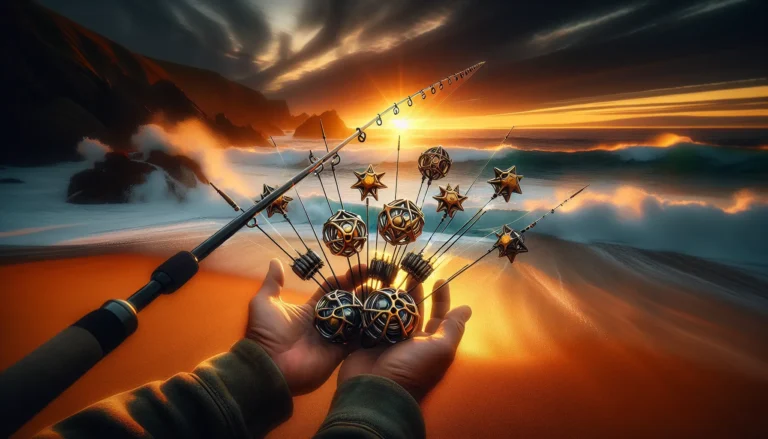Choosing the right clothing to wear under waders is crucial for comfort and performance when fly fishing. Many anglers overlook this essential aspect, focusing solely on their outer gear. However, what goes underneath can make or break a day on the water, affecting warmth, moisture management, and overall enjoyment of the fishing experience.
This article explores the best options to wear under fly fishing waders for various conditions. It covers top materials for under-wader clothing, layering strategies for different weather scenarios, and specialized garments designed specifically for use beneath waders. Whether fishing in summer heat or winter chill, understanding how to dress properly under waders can greatly enhance one’s time on the river or stream.
Top Materials for Under-Wader Clothing
Synthetic fabrics: Polyester and nylon
Synthetic materials like polyester and nylon have become popular choices for under-wader clothing due to their excellent moisture-wicking properties. These fabrics are capable of absorbing as little as 0.4 percent of their weight in water, making them safer and more effective at keeping anglers dry . Polyester, in particular, excels at pulling moisture away from the skin and allowing it to evaporate quickly, ensuring comfort during physical activities .
Nylon, another synthetic option, offers good moisture management and breathability while being lightweight and durable . Both materials have seen significant improvements over the years, with modern versions being soft, reliably stretchy, and even odor-fighting .
Natural fibers: Merino wool and bamboo
Merino wool stands out as a high-performing natural fiber for fishing base layers. Its smaller, softer fibers and natural lanolin content make it hydrophobic, effectively transporting moisture away from the skin . Merino wool also has natural antibacterial properties, helping to control odors during extended wear .
Bamboo fabric has gained popularity as an eco-friendly alternative with excellent moisture-wicking abilities . However, it’s important to note that bamboo clothing is actually made from rayon or viscose, which is produced through a chemical process using bamboo as a raw material .
Read Also: Is Fly Fishing Hard to Master? Expert Insights Tips
Pros and cons of each material
- Synthetic fabrics:
Pros:- Excellent moisture-wicking and quick-drying properties
- Lightweight and durable
- Often more affordable than natural alternatives
Cons: - May retain odors more quickly than natural fibers
- Merino wool:
Pros:- Natural moisture-wicking and odor-resistant properties
- Excellent temperature regulation
- Continues to insulate when wet
- Cons:
- Generally more expensive than synthetic options
- Bamboo (Rayon/Viscose):
Pros:- Soft and comfortable
- Eco-friendly raw material
Cons: - Slower to dry compared to synthetics
- May not retain antibacterial properties after processing
When choosing materials for under-wader clothing, anglers should consider factors such as weather conditions, personal comfort preferences, and budget. Synthetic fabrics like polyester and nylon offer excellent moisture management and durability at a lower cost, while natural fibers like merino wool provide superior odor resistance and temperature regulation. Ultimately, the best choice will depend on individual needs and fishing environments.
Layering Strategies for Various Weather Conditions
Hot weather layering techniques
In warmer temperatures, moisture management becomes the top priority for anglers. A lightweight synthetic or wool-blend base layer serves as an excellent foundation for hot weather fishing . This layer effectively wicks perspiration away from the skin, keeping the angler dry and comfortable. It’s crucial to avoid cotton socks, as they retain moisture and can lead to discomfort .
For temperatures ranging from 70 to 100 degrees Fahrenheit, a single lightweight synthetic base layer often suffices . These garments are designed to dry quickly and many feature antimicrobial treatments to prevent odor and bacteria growth, which is particularly beneficial in hot, humid conditions or during multi-day fishing trips .
Read Also: Top 15 Best Gifts for Fly Fisherman in 2024
Cold weather insulation methods
Cold weather fishing requires a more comprehensive layering system. The general principle involves a base layer, a high pile or waffle fleece midlayer, and an insulating outer layer . This combination traps body heat and maintains warmth throughout the day.
For temperatures between 0 and 40 degrees Fahrenheit, anglers should prioritize both warmth and dryness . A recommended layering system includes:
- Base layer: A midweight synthetic or wool/synthetic blend that efficiently moves moisture away from the skin .
- Insulating layer: Fleece is an excellent choice for this middle layer .
- Outer layer: A breathable, waterproof layer, such as quality waders .
It’s important to note that neoprene booties on breathable waders don’t allow for moisture evaporation, so proper sock choice is crucial . A good all-synthetic or wool-blend heavyweight or midweight sock is ideal for managing foot moisture .
Adapting to changing temperatures
For fishing in variable conditions, flexibility in layering is key. In temperatures ranging from near freezing to 65 degrees Fahrenheit, anglers should be prepared to adjust their layers throughout the day .
A versatile layering system might include:
- A moisture-wicking base layer made of merino wool or synthetic materials .
- A stretchy, insulating mid-layer, such as the Patagonia Tough Puff Pants or R2 TechFace Pant .
- Breathable, waterproof waders as the exterior layer .
This system allows anglers to add or remove layers as needed, ensuring comfort in changing conditions. It’s also important to choose breathable layers for the upper body, as it’s enclosed in the waders and potentially a waterproof shell .
Specialized Under-Wader Garments
Purpose-built wader liners
Neoprene wading socks have emerged as an essential item for anglers who prefer wet wading. These specialized socks, priced between $25 and $50, serve multiple purposes . They fill the space in wading boots typically occupied by wader booties, providing comfort and protection for the feet. The built-in gravel guards on these socks fold down to prevent sand and pebbles from entering the boots, enhancing the overall fishing experience .
For additional comfort, some anglers opt to wear regular socks underneath the neoprene wading socks. Mid-weight hiking socks made from materials like those produced by Darn Tough can prevent chafing and improve overall comfort during long days on the water .
Convertible pants and zip-off options
Convertible pants with zip-off legs offer versatility for anglers facing changing weather conditions. However, opinions on their practicality vary. Some users find them uncomfortable, particularly where the zipper sits, leading to chafing . Others appreciate the flexibility they provide, allowing for easy transitions between pants and shorts as needed .
When considering convertible pants, it’s crucial to prioritize quick-drying, lightweight materials. These properties ensure the pants don’t become heavy or waterlogged during wading. Some anglers prefer full-length pants over shorts for wet wading, as they provide better protection against vegetation and insects commonly encountered near trout streams .
Compression garments for improved circulation
Compression garments, such as CEP Compression Socks, have gained popularity among anglers for their potential benefits. These specialized socks are designed with a precise compression profile targeting specific muscle groups . The graduated compression technology aims to improve blood circulation, which may enhance performance and speed up recovery times .
However, scientific evidence regarding the effectiveness of compression garments is mixed. While some studies suggest potential increases in arterial blood flow, it’s unlikely that compression garments significantly alter metabolic responses, blood pressure, heart rate, or cardiorespiratory measures . Nevertheless, compression garments may reduce muscle oscillation and have a positive effect on sensorimotor systems .
During long fishing sessions, compression socks can provide noticeable muscle stabilization and reduce fatigue . The moisture-wicking properties of these garments help keep feet dry, which is crucial for preventing chafing and blisters . While the benefits may vary among individuals, compression garments are unlikely to negatively impact exercise-related outcomes .
Conclusion
The choice of clothing under waders has a significant impact on the comfort and enjoyment of fly fishing. By selecting the right materials and employing effective layering strategies, anglers can stay dry, warm, and comfortable in various weather conditions. Synthetic fabrics and merino wool stand out as top choices, each offering unique benefits to suit different preferences and environments.
To wrap up, the key to a successful day on the water lies in understanding how to dress properly beneath waders. This involves considering factors such as weather, personal comfort, and budget when choosing under-wader garments. By paying attention to these details, anglers can focus on what truly matters – the thrill of the catch and the beauty of their surroundings.
FAQs
What should you wear under waders?
When choosing clothing to wear under waders for fly fishing, it’s essential to consider both the material and the weather conditions. Options include synthetic fabrics like polyester and nylon, or natural fibers such as Merino wool and bamboo.
How should fly fishing waders fit?
Fly fishing waders should fit comfortably, allowing for a full range of movement. Ensure there is a gap of about 3-5 inches from your chest to the top of the wader to accommodate extra layers or a bulky jacket. It’s also important to squat down to check that the knees and crotch area are not too tight.
How do I determine my size for waders?
To find your correct wader size, measure your chest at its broadest point and your inseam from the crotch to the bottom of your pant legs. Use these measurements to compare against the size chart provided by the wader manufacturer.
Do your feet stay dry in fly fishing waders?
In fly fishing, your feet will remain dry when wearing proper waders as the neoprene booty attached to the legs prevents any water entry. This is unlike wet wading, where water can enter the wading boots and guard sock.




